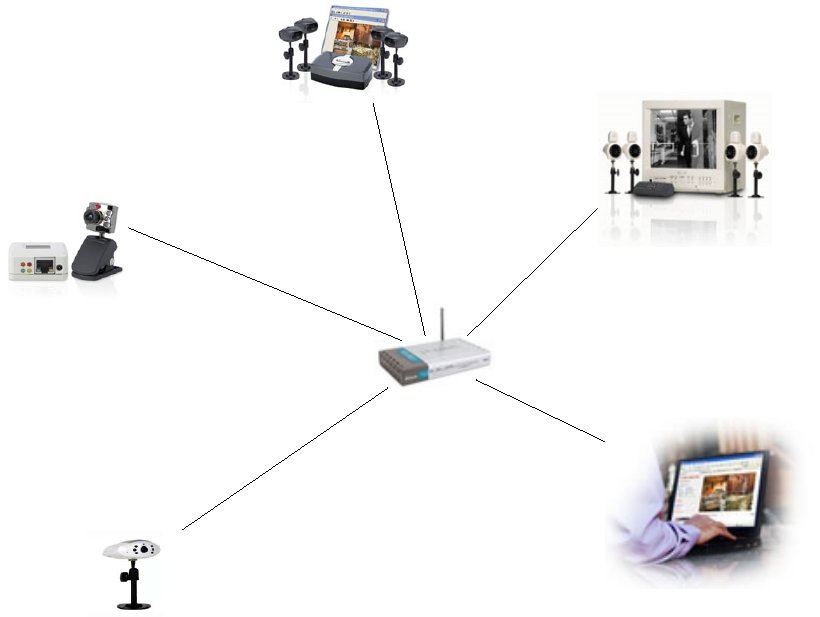Surveillance Systems Consumer Guide
Table Of Contents
- Introduction
- Background to the Technology
- Types of Surveillance Systems
- What is the difference between Local and Remote Network Surveillance?
- How do I configure my gateway/router?
- How to I locate the video devices?
- What is the difference between a Static and Dynamic IP Addresses?
- What is the difference between an internal and an external IP Addresses?
- What is port forwarding?
- What is Domain Name Service (DNS)?
- What does a Dynamic DNS service do?
- Implementing Remove Access
- Glossary
- Conclusion

Figure 2: Local Network Surveillance
In the figure 2 above, the video is displayed on a computer, PC(a), that is connected to the Local Area Network.
In the following figure 3, the video is being monitored by a computer PC(b) that is attached to the Internet at
some remote location. Hence all connections from the remote computer needs to traverse the Internet Gateway
between the Internet, or Wide Area Network (WAN) and the Local Area Network (LAN) to reach the Video
device. The video signal need to traverse the gateway in the reverse direction.
4
Network Switch
Video Server
Monitor
PC Video System
PC (a)
Network Camera










